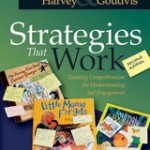Starting Monday, the students are going to take the notes they have written and plug the note numbers into a 4-square. After that, they're going to construct an outline, edit it, and finally write a short paper on wolves.
Keep your fingers crossed. I'm hoping modeling the process for them and then having them work with me will give them a leg up on research writing.
Judy
Friday, November 11, 2011
Tuesday, November 8, 2011
note-taking lesson
Some of the standards for ELA cover researching and writing papers. I did a lesson today on notetaking that seemed to help get them started in the right direction.
First - I found some general directions on notetaking - skim first, look at headings, captions, structure of passage (bold print words, etc.) before starting to take notes and put it on a Word document so I could project it.
Next - I cut / pasted three short passages on wolves into word document - with web addresses
I put the first page of directions on the screen and just briefly read over them with the kids. Then I put up the passages. As per the directions, they could tell me what they needed to do first. I modeled skimming and thinking aloud about the structure / headings.
Next they got out a sheet of paper and we practiced taking down just facts from what we read. (Somewhere I saw to explain to them it's like texting: you don't text whole sentences, just facts / key words.)
We only did the first passage today, so I'm going to move on to the 2nd and 3rd tomorrow. I think notetaking was becoming a bit clearer. I hope so; they have a major research paper they will be starting for science in a few weeks!
Judy
First - I found some general directions on notetaking - skim first, look at headings, captions, structure of passage (bold print words, etc.) before starting to take notes and put it on a Word document so I could project it.
Next - I cut / pasted three short passages on wolves into word document - with web addresses
I put the first page of directions on the screen and just briefly read over them with the kids. Then I put up the passages. As per the directions, they could tell me what they needed to do first. I modeled skimming and thinking aloud about the structure / headings.
Next they got out a sheet of paper and we practiced taking down just facts from what we read. (Somewhere I saw to explain to them it's like texting: you don't text whole sentences, just facts / key words.)
We only did the first passage today, so I'm going to move on to the 2nd and 3rd tomorrow. I think notetaking was becoming a bit clearer. I hope so; they have a major research paper they will be starting for science in a few weeks!
Judy
Thursday, November 3, 2011
"Strategies that Work"
I have this book in the first edition from when I took Literacy Coach training several summers ago. It has very workable things to do with the students in a regular class, not just for when you have the staff to pull out small groups for individualized attention. Not only do they describe the strategy, they also explain how it works in a real class, and show you examples of student-generated work. According to the website, the newer edition has more strategies and even has a free PDF study guide to go along with it. Doc, the strategies will work with higher grades as well - they aren't just elementary.
Judy
http://www.stenhouse.com/shop/pc/viewPrd.asp?idcategory=0&idproduct=310

Since its publication in 2000, Strategies That Work has become an indispensable resource for teachers who want to explicitly teach thinking strategies so that students become engaged, thoughtful, independent readers. In this revised and expanded edition, Stephanie and Anne have added twenty completely new comprehension lessons, extending the scope of the book and exploring the central role that activating background knowledge plays in understanding. Another major addition is the inclusion of a section on content literacy which describes how to apply comprehension strategies flexibly across the curriculum.
View the study guide that accompanies Strategies That Work. The guide is in PDF format so you will need the free Acrobat Reader on your computer.
Judy
http://www.stenhouse.com/shop/pc/viewPrd.asp?idcategory=0&idproduct=310

Strategies That Work
Teaching Comprehension for Understanding and Engagement, Second Edition
Stephanie Harvey and Anne Goudvis Since its publication in 2000, Strategies That Work has become an indispensable resource for teachers who want to explicitly teach thinking strategies so that students become engaged, thoughtful, independent readers. In this revised and expanded edition, Stephanie and Anne have added twenty completely new comprehension lessons, extending the scope of the book and exploring the central role that activating background knowledge plays in understanding. Another major addition is the inclusion of a section on content literacy which describes how to apply comprehension strategies flexibly across the curriculum.
View the study guide that accompanies Strategies That Work. The guide is in PDF format so you will need the free Acrobat Reader on your computer.
Subscribe to:
Posts (Atom)